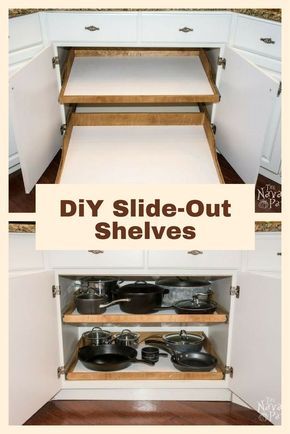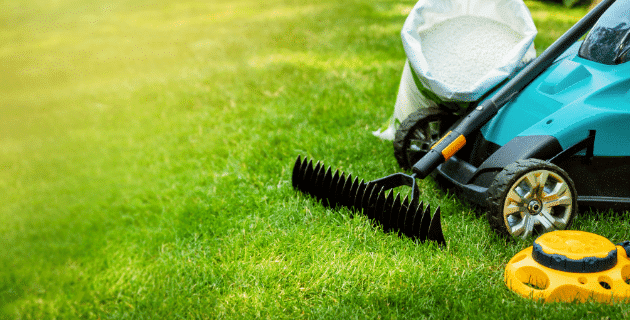
by California Casualty | Auto Insurance Info, Homeowners Insurance Info, Safety |
There’s a reason why a tornado strikes immediate fear for those in its path. These violent storms can flip cars, uproot trees, and destroy entire properties. Their powerful winds can even lift objects hundreds of feet off the ground and leave complete devastation in their wake.
Here’s what you need to know to keep your home, your vehicle, and your family safe from tornadoes and high winds.
What is a tornado?
A tornado is a spinning, funnel-shaped cloud usually formed as part of a thunderstorm. Tornadoes can be over a mile wide and as much as 50 miles long. Their narrow funnel shape extends from sky to ground with winds that can reach speeds up to 300 mph. (To put that in context, the average car can be moved by a 90-mph wind.)
While certain regions of the country have been dubbed “Tornado Alley,” it’s not true that tornadoes are prone to occur in those places. Tornadoes can occur anywhere and anytime and have been reported in all 50 states.
How do we predict tornadoes?
Tornados, and their paths, are notoriously difficult to predict. Even meteorologists who study the weather don’t know for sure how they form. However, the National Weather Service is able to track conditions that can contribute to tornadoes—and issue tornado watches and warnings as needed.
A tornado watch means to prepare for severe weather. A tornado warning means that a funnel cloud has been reported by spotters or indicated by radar.
What are the warning signs of a tornado?
By the time you see warning signs, that means a tornado is well on its way. You’ll need to act fast. Here are just some signs to look for:
-
- Large hail without rain
- Dark or greenish sky
- An approaching cloud of debris
- A loud roar like that of a freight train
- How do you prepare for a tornado?
You can take the steps to protect your home, your car, and your family right now.
1. Sign up for severe weather alerts. You can get critical and timely information from local media broadcasts and the emergency alert system on your TV or desktop and mobile devices. In addition, your local utility company, township, city, or state may offer free alerts. Check with your electric or gas company, and with city hall or municipal government.
2. Develop a family disaster plan. Your plan of action will identify where you and your family will shelter in place, and what to do if you get separated. It also will address any special needs of family members and your pets.
3. If there is not a safe space in your home to wait out a tornado, research local public shelters. For example, if you live in a mobile home, tornadoes can easily turn over mobile homes. Plan to go to a public shelter.
4. Gather emergency supplies in case you need to shelter in place. Keep them together in an easily accessible place. Include water, nonperishable food, and medication. Pack a first aid kit.
5. If there is a tornado watch, store items like outdoor furnishings that could become flying debris. Make sure cars are parked well away from trees.
How do you stay safe during a tornado?
If you’re home…
-
- Go immediately to a safe place such as a basement, storm cellar, center hall, or small interior room in your home. Choose the lowest floor possible and avoid windows. Also, avoid places where heavy items like refrigerators may be directly above you. If a tornado strikes, it could come crashing down.
- For added protection, get under a table. Cover yourself with thick padding such as blankets or even a mattress. This will help in case the ceiling falls in.
- If the power goes out, use flashlights rather than candles if you need a light. An open flame can create a fire hazard if gas lines are damaged by severe weather.
- Have a weather radio or your phone tuned into local weather. Tornadoes can be accompanied by flooding. Know when the tornado is gone and it is safe to emerge.
If you’re driving…
-
- Do not try to outrun a tornado in a car. Pull over.
- Tune into your local weather radio station, or if you are traveling, call the weather emergency number listed on the signs along the highway.
- Park in a low, flat location. Avoid bridges or overpasses.
- If you can, leave your car and get to safety inside a sturdy building.
- If you cannot find adequate shelter, then stay in your car with your seat belt buckled. Put your head down below the windows. Cover your body with a coat or blanket and your head with your arms.
What do you do after a tornado?
Once it is safe to venture out, it’s time to inspect the damage. Wait until daylight and make sure to look around safely. Stay clear of fallen power lines. Stay out of damaged buildings. Make a plan to clear away debris and downed trees from your yard.
If your home, car, or property suffered damage from the tornado, you will want to take the following steps:
-
- Secure your property from further damage.
- Take photos to document what has happened.
- Alert your insurance company, determine if you are covered for the damage, and file a claim.
You have home and car insurance for a reason. Put it to work if you need it. Make sure you and your family are fully protected in the event of a tornado, and any damage that follows, such as flooding. Call a California Casualty agent today at 1.866.704.8614 or visit our website www.calcas.com.
This article is furnished by California Casualty, providing auto and home insurance to educators, law enforcement officers, firefighters, and nurses. Get a quote at 1.866.704.8614 or www.calcas.com.

by California Casualty | Auto Insurance Info |
Spring brings warmer weather, plenty of sunshine, and new blooms. But it also brings its share of storms, road glare, and other driving hazards. Here’s how you can stay safe when driving this spring.
Tip #1: Drive slowly and use caution in the rain.
Roads are most slippery when it starts to rain. This is due to rainwater mixing with the oil and grease on the road. But whether the rain has just begun or it’s been coming down for a while, it still makes roads slick.
-
-
- Keep your headlights on so that you are more easily seen.
- Slow down and increase your following distance from other cars. Remember that any amount of water could cause you to skid or hydroplane.
- Make sure your tires have enough tread and your wiper blades are in good condition.
- Avoid using cruise control in the rain.
- Avoid driving through water, which can damage your vehicle. If there’s too large a puddle, consider an alternate route.
Tip #2: Avoid potholes and puddles that could be covering potholes.
Freezing, thawing, and road salt in winter can help to create potholes. That’s why you may notice more of them in the spring. If you hit a pothole at too high a speed, or if it’s too deep, there could be problems. Potholes can lead to punctured tires, bent rims, suspension damage, poor alignment, or other expensive repairs.
-
-
- You may or may not see potholes coming. It’s even harder when they’re covered by puddles. Slow down and drive around both potholes and puddles.
- Keep a safe distance when following another vehicle.
- Keep both hands on the wheel to avoid losing control if you do strike a pothole.
- If you encounter a pothole that is especially large or deep, try to find another route.
Tip #3: Be prepared for sun glare.
Spring is known for its bright sunshine that can temporarily blind you when you’re driving. The hours following dawn and preceding sunset are typically the times when the sun is the brightest.
-
-
- Position the sun visor in your car to block the light.
- Sometimes moving the visors don’t do it. Sunglasses help reduce the sun’s intensity. Keep a pair handy in your car. Wearing a hat or sun visor can help too.
- Slow down. Give yourself plenty of distance behind the car in front.
- Keep your windshield clean. Dust, dirt, and pollen can make the glare worse.
- Pull over if you can’t see.
Tip #4: Share the road with construction, bikes, pedestrians, and kids playing.
Spring weather brings everyone out. That includes construction crews, bicyclists, pedestrians, and of course, children playing. Awareness is the first step.
-
-
- Drive slowly in residential areas. If a ball goes bouncing into the street, chances are there will be a child chasing it.
- Stop and give the right of way to pedestrians in crosswalks. Never pass vehicles that are stopped at crosswalks.
- Slow down and follow signs for new traffic patterns in construction zones. Solid lines in construction zones mean “stay in your lane.”
- Learn biking hand signals, and look for bicycles before you make turns. Allow plenty of space when passing bicyclists.
Tip #5: Be on the lookout for deer at dawn and dusk.
Deer migrate during the spring and sometimes venture too close to roads. A collision with a deer is not only fatal for them; it’s costly in terms of vehicle repairs.
-
-
- Be especially careful during dawn and dusk when deer activity is at its highest.
- Look out for deer crossing signs. These are posted at locations where deer sightings are common.
- Use high beams at night as long as facing traffic isn’t coming.
- If a collision seems inevitable, do not swerve into the other lane. You could hit a vehicle and cause an accident that’s worse.
- Brake firmly, and try to graze the deer rather than hit it. Ease up on the brake just before you connect with the deer. It will cause your vehicle to lift a bit, which might keep the animal from hitting your windshield.
Tip #6: Know how spring allergies can affect your driving.
Spring is a time for allergies. Driving with sneezing, runny eyes and nose, and congestion can be a big distraction. But allergy medications that cause drowsiness could do greater harm.
-
-
- Read the warning label on your allergy medication. If it warns against driving or operating heavy machinery, don’t do it.
- Replace your car’s air filters to ensure they are filtering pollen, mold, and other allergens.
- Consider washable car mats instead of cloth ones so you can clean them. Give your car a spring cleaning.
- Roll up your windows and turn your air conditioner to the recirculation setting. This minimizes the amount of fresh air coming in.
Tip 7: Make sure your vehicle is in good working order.
Keeping your vehicle in top condition will help you navigate the challenges of spring driving more easily. Follow a schedule for regular maintenance.
-
-
- Check your vehicle’s headlights, turn signals, and tail lights to make sure they are working. Make sure your headlights are aligned.
- Check your car’s wipers and replace the blades if they are showing signs of wear.
- Check your car’s air conditioning system to make sure it’s working.
- Make sure your tires have enough tread and are inflated. As temperatures rise and fall, your car tires may expand and contract. This causes loss of air pressure. You will want your tires to be inflated to manufacturer specifications. Check your owner’s manual.
- Finally, make sure you have the proper car insurance. Coverage will give you peace of mind should anything happen.
Now go enjoy the warmer weather. 😊
This article is furnished by California Casualty, providing auto and home insurance to educators, law enforcement officers, firefighters, and nurses. Get a quote at 1.866.704.8614 or www.calcas.com.

by California Casualty | Auto Insurance Info |
You’re ready for a new car—or a new used one. But starting your car search at the dealership puts you at a serious disadvantage. Before you start the process to make such a significant purchase, do your due diligence.
Here’s what you need to do before you look for your next car.
1. Know what you want.
Chances are you already know what you’d love in a new (or new to you) car. You also know what you need. Separate those into two columns: the list of essentials and the list of “nice-to-have” features. Do you drive long distances? You need a car with good gas mileage. Do you have a family of 7? You need enough seating. Do you drive in the snow? All-wheel drive could be a necessity. Do you have the latest smartphone? Bluetooth could be important to you. Knowing what you want in a car is the first step in your car buying journey. Knowing what you need gives you a baseline for your search.
2. Know what you can afford.
A car out of your price range is the wrong car, no matter how many boxes it checks. You need to be able to afford not only the cost of the car but the cost beyond the sticker price. This includes car insurance, registration, taxes, and fees, as well as gas and regular maintenance. Take some time and do a budget on what you can comfortably afford to spend monthly on a car. A good guideline is to spend no more than 20% of your net monthly income. Importantly, keep this number in mind, but keep it to yourself. A car salesman can tempt you with payments stretched out over a longer-term in order to meet your monthly number, but you’ll end up paying more over time.
3. Used or new?
There are pros and cons of buying a new versus a used car. A new car offers the latest technology, including safety features. It’s also under warranty, so if something goes wrong, it’s covered. However, new cars quickly depreciate in value. Used cars depreciate more slowly and are less expensive to start. With a used car, you’ll likely to get outdated technology and less fuel efficiency. There also is the potential for costly maintenance and repairs. If you’re buying a used car, look into pre-certified used options which will come with a manufacturer’s warranty.
4. Buy vs. lease?
Owning your vehicle is the goal for most people; after all, you have something to show for your payments over time. However, leasing can be the right option in some circumstances. A lease is a rental agreement where you pay for use of the car for a specific period of time and then return it or have the option to purchase it. Leasing allows you to drive a car under factory warranty and have the newest technology every few years. It also comes with a lower monthly payment. However, there are mileage restrictions with leases and fees if you end the agreement early. You also don’t have a car to show for it at the end of the leasing period. Buying not only ensures you have a car, but it also allows you to resell it. Plus, after finishing the financing obligation, you’ll be in the coveted spot of having no car payment—at least for a while.
5. Find your current car’s trade-in value.
If you’re going to be trading in your car, knowing its worth will put you in a stronger bargaining position. Check the Kelley Blue Book. Type in your car’s year, make, mileage, and get an estimate of your car’s worth in your region. Use this amount in your negotiations with dealerships and private parties when you trade-in your car as part of the sale.
6. Find potential new and used cars.
There are only so many makes and models in your price range that will fit your needs and wants list. Preview the list before buying so you can start to narrow down your top choices. Read expert reviews, recalls, and road tests. Check out articles like popular cars for parents or if you know your teenager will also be spending time behind the wheel, best cars for teens. Look for used cars within your budget on sites like J.D. Power, Carvana, or CarMax. Note that while you can buy a used car online, you can only buy a new car at a dealership. In the U.S., dealers have the exclusive right to sell them.
7. Think about the best time to buy a car.
You may need a car now. But if you have the luxury of time, you may be able to wait for special pricing, rebates, or promotions—including student or veteran discounts. If you’re not in a hurry, a good time to buy a car is generally between October and December. That’s when dealerships need to make space for new models. They also have year-end quotas to meet. No matter what time of the year, avoid weekends when dealerships are most busy. A weekday will give you more attention and more time to negotiate.
8. Know your financing options.
You may have enough saved to buy your car outright. If not, you have two choices for financing it: direct lending and dealership financing. Independent lenders like your bank may offer a lower interest rate. Dealers however could offer incentives like 0 percent financing. (You may need to qualify with a good credit score.) To put yourself in the strongest possible position to bargain, get preapproved for a car loan. Then, dealerships will treat you as a cash customer rather than a monthly payer.
9. Check your credit score.
Your credit score could determine the interest rate on your loan. Check your score so there are no surprises. You can get a free credit report from each of three nationwide credit bureaus: Equifax, Experian, and TransUnion.
10. Research dealerships.
Just as you will research your car, you’ll also want to learn about the places where you might buy it. Read dealership reviews to get a sense of how happy customers are. Ask family and friends for recommendations. Identify a few dealerships in your region, not just one. That way you can compare prices and experiences.
11. Organize your paperwork.
When you’re ready to buy a car, you’ll need your driver’s license, payment method, and proof of insurance. If you’re financing through a dealership, you’ll also need proof of income and employment. Make sure these papers are in order and ready to go when you need them.
12. Call your insurance company,
When you buy your new car, your dealership often calls your insurance company during the purchase process. That doesn’t give you time to consider the rates for the make and model that you’ve chosen. Give your agent a call ahead of time. Get a cost quote. That way, there will be no surprises when you’re ready to buy.
Happy searching!
This article is furnished by California Casualty, providing auto and home insurance to educators, law enforcement officers, firefighters, and nurses. Get a quote at 1.866.704.8614 or www.calcas.com.

by California Casualty | Homeowners Insurance Info |
Have you spent years dreaming about a home makeover? Or find yourself sitting on social media watching others DIY thinking ‘why can’t I do that?’ You CAN! Believe it or not, you don’t have to be a design expert to create a cozy corner, a relaxing vibe, or a stylish space in your home. Here are some quick and easy DIY room makeovers for your home that you can do this spring to give your space a nice little refreshing update- on a budget.

Bedroom
– Choose a color scheme. Pick two main colors and use them to choose varying textures and patterns which will add visual interest. This will help tie together the look of your room, whether it’s a bedroom or other room in your home. Best colors for bedrooms are cool, relaxing tones. Think shades of blue and muted greens.
– Showcase your headboard. The bed is the focal point in your room. Give it a little drama with the right headboard. For an easy fix, use a curtain behind your bed as the headboard. Make your own fabric headboard with material that matches your color scheme.
– Remember the fifth wall. Who said ceilings need to be white? In bedrooms, we spend our share of the time staring at the ceiling. Paint the ceiling a color, and see how it transforms the space.
– Hang drapes from floor to ceiling. Go a few inches above your window to add height, and have the drapes go down to the floor for an elegant feel.
– Get fancy with hardware: Chances are that your nightstands and dressers have traditional knobs. Change them out for tassel hardware or other fancy options.

Living Room
– Create a gallery wall. Choose the photos that represent wonderful moments in your life, and images of the people who are most important to you. For a cohesive look, choose the same color frames. Make it a statement wall by painting it a color that’s different from the other three walls.
– Include a hobby piece. Do you love to travel? Perhaps you play guitar. See if you can incorporate some of your favorite past times in the décor. A surfboard shelf, framed albums, a world map, or a guitar hung on your wall not only is a decoration, but a reminder of your happy place.
– Wallpaper a wall. Removable wallpaper lets us change our style without the long-term commitment. Choose a vibrant pattern in your color scheme for one focus wall. The wallpaper becomes the art and sets the tone for the space.
– Add wainscoting to your wall. This decorative trim transforms a room with its elegant accent pieces. You can even use the trim as a guide and paint the wall different colors above and below.
– Conceal the clutter. Use baskets or decorative boxes to store magazines, electronics, and loose items that you use regularly. Place them on a bookshelf to keep them out of the way.
– Add an area rug. It doesn’t matter if you have a carpet already in your living room. You can still add an area rug on top. Choose a pattern in your color scheme and it becomes artwork for your floor.

Kitchen
– Add a backsplash. It creates a beautiful focal point behind the stove and in other places above the counters. There are so many options available, from glass mosaics to tile to peel-and-stick. You can find online tutorials on how to install a backsplash from the major retailers and home improvement sites.
– Upscale your knobs and handles. Give your drawers and your cabinets a fresh look by changing out the knobs and handles. It’s a lot easier than painting cabinets, though you can do that, too.
– Install a pot rack on your wall. It’s an easy way to display your cookware while freeing space in your cabinets for other utensils.
– Add under cabinet lighting. You don’t need to be an electrician to install this type of lighting, which is self-adhesive and comes in strips that can be trimmed to fit your space. It plugs into a standard outlet and some models come with dimmer switches.

Bathroom
– Upgrade that mirror. You don’t have to spend a fortune to switch out your plain bathroom mirror for one that will be a focal piece. You can add your own frame. You can also reimagine the space with a find from the local thrift shop. Don’t hesitate to add paint for that special look.
– Paint your bathroom vanity. A little paint can transform an old vanity into a beautiful piece. Switch out the knobs and drawer hardware for an even newer look.
– Change out your towel rack. You can find many towel racks at your local home improvement store. If you have the time, consider making your own to highlight your own personal style.
Not sure where to start?
– Create a mood board. Collect images of items that you like. You can do this on Pinterest or on a PowerPoint or Word document. You can even do it old school and paste the pictures on a board.
– Find your color scheme in a favorite piece of art. See if those colors will work for your room, and of course, make sure that the art piece is part of the décor.
– Move furniture around. Take out a piece of furniture. See what works and what doesn’t for your space.
For more spring DIY décor inspo, check out our Pinterest Board- Staycation DIYs! Be sure to follow us for every new DIY we discover.
Happy decorating! 🙂
This article is furnished by California Casualty, providing auto and home insurance to educators, law enforcement officers, firefighters, and nurses. Get a quote at 1.866.704.8614 or www.calcas.com.

by California Casualty | Homeowners Insurance Info |
Everyone loves a lush, green lawn. But that thick neighbor-envying grass isn’t just pretty to look at or comfortable to walk on; a well-manicured lawn can boost your home’s curb appeal and even its value. Maintaining your lawn regularly will also help keep weeds and harmful pests away.
Keeping up with lawn care is a year-round job (just ask any dad!), but the results are definitely worth it. Follow our lawn care calendar for an easy way to create a healthy and beautiful lawn all year long.
Spring (March, April, May)
– Clean up your yard. Rake up fallen leaves and dead grass. Throw away sticks and other debris.
– Test your soil. You want to know if the nutrient levels and pH are in a good range. You can buy an at-home soil test kit or send it over for a professional analysis to your local cooperative extension, nursery, or university. They will advise on any treatments needed. For example, you can use fast-acting lime to restore pH balance.
– Get your mower ready. Sharpen the blades or have them sharpened. Tune-up the mower. Replace the air filter and spark plug if needed. Fill it with fresh gas.
– Aerate your lawn. Aeration makes holes in your lawn, which open up pathways for air, water, and nutrients to reach the roots of the grass. After you aerate, break up the cores of dirt and leave them on the surface of the grass. They will decompose back into the soil.
– Dethatch. Thatch is a layer of buildup between the soil and grass. A thin layer of thatch helps to insulate the roots and keep moisture in. However, any layer thicker than a half-inch can suffocate your lawn. Check for the thatch level by digging up a patch of grass. Use a dethatching rake to break up the thatch throughout your lawn.
– Fertilize. If you live in cooler climates, fertilize in early spring. Warmer climates can wait until mid to late spring. Use a slow-release fertilizer for the best long-term results.
– Apply herbicides. When the soil reaches 58 degrees Fahrenheit, apply pre-emergent weed control, which keeps weeds like crabgrass from springing up. You can find soil thermometers at garden stores. Consider a pet-friendly herbicide if you have pets using your yard.
– Mow your lawn when the grass starts growing. Cut slightly lower than usual for the first few times. Then, mow as usual, and leave the clippings to decompose. They will help add nutrients to the soil
– Water your lawn so that it gets 1 to 1-1/4 inches of weekly moisture, including rain.
Summer (June, July, August)
– Keep mowed grass tall. Put the mower on the tallest or second-tallest setting. Keeping the blades high will help to shade the soil, reduce water evaporation, and fight against competing weeds.
– Treat grubs. These c-shaped pests are actually the larvae of Japanese beetles. They are nearer the surface during this stage. You can have some grubs, but too many in your grass will damage it. Dig up a square foot section of sod and count the grubs. Less than 10 is fine. If you find more, you will want to apply some type of chemical or organic control. (Not that organic treatment options take longer, and sometimes years.)
– Control weeds. You previously treated with a pre-emergent herbicide. Now try a post-emergent one, when weeds are present. Choose from selective herbicides which will target the weed or nonselective ones which could harm the grass around it. If you choose the second option, read the directions carefully.
– Fertilize to increase energy stores for winter. It may be summer but your grass will be storing nutrients for its dormant season. Plan to fertilize 6-8 weeks before your region’s first expected frost.
– Water your lawn. Use a water calculator to give your lawn the ideal amount for your region.
Fall (September, October, November)
– Keep mowed grass short. By late fall, your mower should be set to about 1.5-2 inches shorter than in the summer. This helps prevent shttps://www.bewaterwise.com/calculator.htmlnow mold and leaves from matting into the grass. Make your final cut of the year slightly lower than normal.
– Test your soil. Make any recommended corrections before winter sets in.
– Fertilize. Feed cool season grass to encourage strong root growth. (To know if your grass is cool season, scroll down to types of grass.)
– Treat with pre-emergent herbicides. Once nighttime temperatures are in the 65-70- degree Fahrenheit range, it’s time to apply herbicides to prevent winter weeds from germinating.
– Reduce watering. Your lawn’s need for water will decrease as rainy season sets in.
– Patch and seed. You may have some bare patches or thin areas. This is the time to seed them. Spread the seed, work it in with a rake, and add a thin layer of straw on top. This will help protect it from the birds and the weather. Water these areas regularly for the first few weeks until the grass is about an inch tall.
– Remove or mulch fallen leaves. You want to improve airflow to the grass roots. This will also help reduce the risk of disease.
Winter (December, January, February)
– Melt ice carefully. Rock salt can damage your lawn but there are ice melts that are designed to be used on grass.
– Consider a midwinter edging. You can keep your lawn neat with an edge and trim as needed.
– If you have trouble areas, take soil samples. Make sure to thaw them out before you test them.
– Fight winter weeds. You can spot green weeds among brown dormant grass. Apply herbicide as needed.
Know Your Grass Type
Did you know grass type varies by region? If you generally experience cold winters, you live in a place with cool season grasses. If you’re in the southern U.S., you live in a place with warm season grasses.
Knowing your grass type will help you decide what to plant and what will grow best on your lawn.
-
- Cool season grasses: Kentucky Bluegrass, Annual Ryegrass, Perennial Ryegrass, Fine Fescue, Tall Fescue, Creeping Bentgrass
- States: Connecticut, Delaware, Idaho, Iowa, Massachusetts, Maryland, Maine, Michigan, Minnesota, Montana, Nebraska, New Hampshire, New Jersey, New York, North Dakota, Oregon, Pennsylvania, Rhode Island, South Dakota, Utah, Vermont, Washington, Wisconsin, Wyoming
- Warm season grasses: Bahia grass, Bermuda grass, Buffalo grass, Carpet grass, Centipede grass, St. Augustine grass, Zoysia grass
- States: Alabama, Arizona, Arkansas, California, Florida, Georgia, Louisiana, Mississippi, New Mexico, South Carolina, Texas
Some grasses like zoysia work in warm and colder climates. Check with your local garden store on recommendations for what grows best in your region.
This article is furnished by California Casualty, providing auto and home insurance to educators, law enforcement officers, firefighters, and nurses. Get a quote at 1.866.704.8614 or www.calcas.com.









